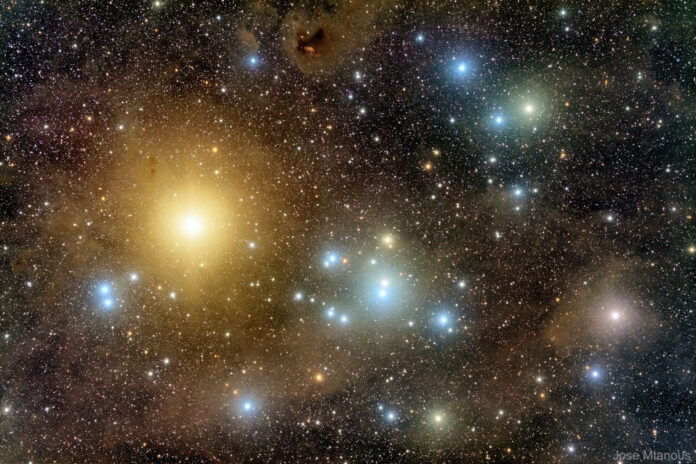
Dwelling under a clear, starlit sky doesn’t always require a telescope for an engaging astronomical experience. A variety of star clusters can be seen with the naked eye. Examples include Pleiades (also known as the Seven Sisters), Praesepe (The Beehive Cluster, M44), and the so-called Hyades.
If you reside in a region with minimal light pollution, you are likely to spot the ten brightest stars of the Hyades cluster on any given clear night. The Hyades star cluster is located within the Taurus constellation, which also includes Pleiades. These clusters are among the closest to us in astronomical terms. Comprising around 200 stars, the Hyades group is distanced 153 light-years from Earth and commands a mass of approximately 400 times that of our Sun.
Finding the Hyades
To spot the Hyades cluster, first locate the constellation’s brightest star, Aldebaran. Situated between Pleiades and Orion, this star represents the fiery red eye of the raging bull. An interesting fact is that Aldebaran isn’t part of the Hyades cluster, despite the apparent close alignment. In fact, Aldebaran is located only 66 light years away from Earth, much closer than most members of the Hyades cluster.
A vibrant snapshot of the Hyades
Astro-photographer Jose Mtanous has captured an exquisite image of the Hyades cluster, which serves as the space photo of the week. In it, Aldebaran is the brightest yellow star, while the blue stars belong to the Hyades cluster. The stars of the Hyades group are spread over an area roughly fifteen light years across.
A cosmic mystery: The unraveling of the Hyades
What’s peculiar about the Hyades, a 600 million years old star cluster, is that it appears to be disintegrating. Researchers believe that dark matter could be responsible for this. Scientists postulate that these unseen clouds of particles are remnants left over from the birth of our Milky Way galaxy. While these clusters are invisible, they exert a noticeable gravitational effect on anything that comes too close. Moreover, the Hyades cluster might also host multiple black holes. If this proves true, it would be a groundbreaking discovery as never before have black holes been found so close to Earth.











